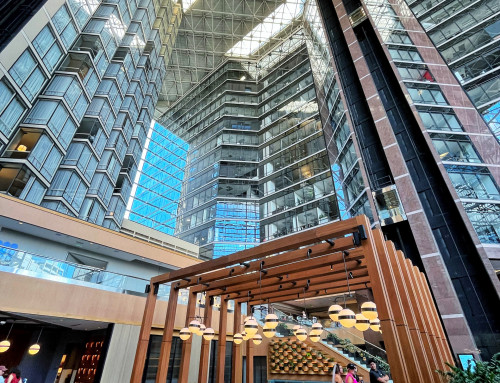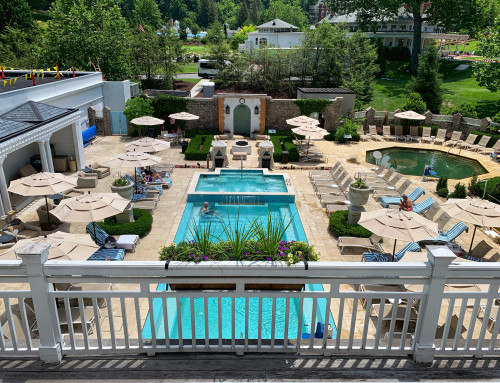Avignon: Kingdom of the Popes
“All roads lead to Avignon” or so went the saying when, in 1305, Pope Clement V moved the papacy from strife-torn Rome to a peaceful, Provencal town in southern France. This political move shifted the center of Christendom from the Eternal City to the small, papal enclave of Avignon for most of the fourteenth century.
From here Clement and his six successors resided continuously from 1308 until 1378, building the world’s largest Gothic palace- the Palais des Papes- and living like kings. The stark Gothic façade gives the impression of an impregnable fortress, yet the interior was a study in opulence and housed some of France’s earliest Renaissance artworks. Their lavish lifestyle and quest for supreme authority earned the Avignon Popes a reputation for corruption and excess, yet it was this extravagant patronage of the arts and sciences that drew great intellectuals, artists, musicians, and astronomers to Avignon, paving the way for the French Renaissance.
Avenio: 5th century BCE
Avenio, a Celtic word meaning “Lord of the River,” was settled as a prehistoric hill fort along the Rhone River in southern France. Its strategic location at the confluence of two major waterways brought the region into contact with great Mediterranean civilizations. The village flourished in the fifth century BCE as a Greek and Phoenician trading post, at which time Provence’s now-famous grape vines and olive trees were introduced. In the second century BCE, the Roman Empire acquired these lands stretching from Italy to Spain, naming the territory “Provincia Nostra” (‘our province’) from which the modern word ‘Provence’ is derived. Avenio evolved into a thriving commercial center due to its situation on the river and also its proximity to a major Roman road, Via Agrippa.
Cultural Crossroads: CE 410– 1226
During the next millennia, Avignon’s rule changed hands many times. In the early centuries, the village was decimated by a series of barbaric invasions. Vandals, Goths and Burgundes sacked Avignon from every direction. The city was eventually incorporated into the Kingdom of Burgundy, where it remained under Frankish rule until the eighth century. Massive ramparts were built, delineating the fortified city with which we are familiar today. A proud and cultured nobility emerged. Their Provencal identity grew strong and Provence became a powerful kingdom ruled by local dukes.
In the early eighth century, Arab armies made their way across newly conquered Spain, setting their sights on France. After seizing many of the region’s major cities, the Duke of Provence surrendered Avignon to the invading Saracens in 734 CE. The city served as an Arab stronghold until Charles Martel expelled Muslim forces three years later in the bloody Battle of Avignon.
Avignon was once again ruled by Frankish kings until 1033, when Provence was absorbed into the Holy Roman Empire under the rule of Emperor Conrad II. For two centuries, Avignon flourished at the hands of distant German and Spanish monarchs, functioning with a considerable amount of autonomy. The city prospered, benefitting from its position on the popular trade and pilgrimage route between southern and northern Europe. Troubadour poetry and music thrived. Craft guilds grew. A merchant-based economy arose. In 1161, Holy Roman Emperor Frederick Barbarossa gave the city autonomous rule, with the bishop at its head.
Avignon: 1226-1308
The Republic of Avignon lasted barely a century. In 1226, King Louis VIII of France marched on Avignon during his crusade against the Cathar heretics and their sympathetic barons. The famous Saint Bénezet Bridge, or Pont d’Avignon, linking the country of France with the Kingdom of Provence was invaluable to both sides as the only fixed river crossing between Lyon and the Mediterranean Sea. The bridge spanning the Rhone served as his only entrance into Avignon. Despite locking their gates and denying the king’s army access to the bridge, Avignon succumbed after a three month siege. As punishment, Louis tore down the walls, filled in the moat and reduced the size of the bridge. Avignon was stripped of its independence, annexed to the French Crown and placed under jurisdiction of the King of Naples- a relative of Louis and vassal to the pope. From this point forward, the city would be closely linked with the papacy.
By the end of the thirteenth century, Avignon’s reputation grew as a center for commerce, intellectualism and religious tolerance. It became a gathering place for Italian scholars and artisans. The open-minded, Provencal culture offered a nurturing platform/ setting/ scenario from which the earliest Renaissance ideals would disseminate into France. More importantly, Avignon was situated within papal-owned territory and, despite the considerable amount of political sway held by French kings over the church, the city remained outside of French rule. It is to this rich, secure environment that seven French popes sought refuge from the turbulence of Rome and attained an extraordinary amount of independence. Many Italians, however, were none too happy about this move, including the illustrious writers, Petrarch and Dante.
The Avignon Captivity: 1308-1378
Throughout his short reign, Pope Boniface VIII (1294-1303) became entangled in bitter feuds with powerful Italian families and European monarchs. France’s ambitious King Philip IV, known as Philip the Fair (1285-1314), took particular offence to the Pope’s claim of spiritual and temporal supremacy. Boniface also made a hard stand against Philip’s taxation of clergy, asserting that kings were subordinate to the Church’s authority. Their open conflict ended in a violent anti-papal movement and the brutal arrest and death of Boniface in 1303.
Upon the election of a less aggressive French pope, Clement V (1305-1314) opted not to move to Rome, but rather aligned himself with King Philip and stayed in France. The papal court was officially transferred to Avignon in 1308. Clement appointed nine fellow Frenchmen as cardinals, assuring the next six popes would hail from France. What began as a temporary relocation for political and social reasons turned into a century-long dispute as to the legitimacy of the papacy’s move to Avignon.
Italian writer Petrarch, who lived in Avignon, accused the church of surrendering to the French king’s political pressure. He believed as long as the Eternal City exists, it is the rightful home of the Pope. More vehemently, Dante assigned Clement V a place in the wickedest level of Hell’s inferno in his poem ‘Divine Comedy’. He compared this corrupt period to the Babylonian captivity of the Jews, prompting the city to be nicknamed “Babylon on the Rhone” and the Avignon Papacy deemed the “captivity of the popes”.
Chateauneuf du Pape
When the papal court moved to Avignon, a massive building campaign transformed an otherwise unimportant town into a wealthy, cosmopolitan city. The new castle of the Pope, or Chateauneuf du Pape, is an awe-inspiring structure built into a prominent outcrop of rock at the edge of the city with walls 17 feet thick; nearly impregnable to attack. Most of the palace was built during the reign of Benedict XII (1334-1342) and Clement VI (1342-1352), two reform-minded popes who preached against worldly excess. Ironically, their spendthrift tendencies resulted in the ultimate display of ostentation- the world’s largest Gothic palace.
The first building phase was initiated by Benedict in 1335. After razing the Bishop of Avignon’s original residence, he selected Pierre Poisson as papal architect. Defense was the first line of business. The Pope’s Tower was built to house the papal treasure and living quarters. Ramparts crowned the outer walls and several more towers were built to reinforce the main gate. Secret staircases and hallways added layers of security.
Upon first appearance, the Palais des Papes is an imposing sight, even today. The severe exterior is quintessentially medieval, but the interior screamed Renaissance elegance with its elaborately painted rooms, graceful timber ceilings, airy vaulting and stained glass; a sumptuous amalgamation of old and new.
Painters to the Pope
Fourteenth century Avignon teemed with Italian artists working in the latest international style. Simone Martini of Sienna was among the pope’s appointed painters (and a friend of Petrarch’s.) His frescoes adorned the ceiling and walls of Avignon Cathedral, inspired by chapels throughout Italy. Fragments of heavenly scenes with a gentle Christ keep watch over the tombs of Benedict XII and John XXII, masterpieces of sculpture in their own right.
Benedict’s successor, Clement VI (1342-52) was of noble birth and spared no expense on a princely existence. He spent extravagantly, patronizing the arts and launching crusades; even digging deep into church pockets to purchase the city of Avignon from Queen Joanna of Naples in 1348. Avignon’s city walls were heavily reinforced- a much needed defense given the onset of the 100 Years War and papal disputes with several Italian states. Clement VI elected to build a new palace (Palais Neuf) adjacent to Benedict’s, which included a massive Audience Hall, grand chapels and additional, luxurious living quarters decorated with silk tapestries, golden bedding and tile floors.
Among the dozen towers, The Saint Jean Tower contains two extraordinary chapels also covered from ceiling to floor with frescoes by Matteo Giovanetti, official Painter to the Pope and follower of Martini. Musical cherubs float across the heavens, while the walls tell tales of saintly miracles. The St. Martial Chapel (1345) and the St. Jean Chapel (1347) incorporate some of the earliest Renaissance painting techniques utilizing “perspective” in France.
Giovanetti also was commissioned to paint Clement’s private chambers. All four walls of Clement’s study were blanketed with frescoes of a lush, naturalistic forest. Hunting, trapping, fishing and other seigniorial scenes encircle the room. The identifiable flora, realistic fauna and sensitive treatment of the human form hint of the blossoming Renaissance. A life size stag lends the room its name- The Chambre de Cerf. The Stag Room’s panoramic mural and attempts at depth perception was progressive and original- the first example of an entirely ‘illusionary space’ since antiquity.
The Great Schism: 1378- 1417
Subsequent popes each made their mark on the palace, but in 1378, Pope Gregory XI returned to Italy. Upon his death that same year, pressure was placed on the cardinals to hastily vote in an Italian pope, who officially returned the papacy to Rome. However, another pope was simultaneously elected by the rival Avignon faction, each claiming legitimacy and excommunicating the other. This forty year division within the church is known as The Great Schism of the West, but ended in 1417 when Rome was formally confirmed as the Holy See.
Avignon continued as a papal territory until the French Revolution (1791), during which much of the palace was looted or destroyed. Today it is a tranquil city. Thousands of visitors wander the cobbled streets into to the palace’s huge, echoing square, overwhelmed by both its gravity and enchantment. Tours are available for palace, cathedral and Petit Palais, a museum of medieval and Renaissance art with works by Botticelli, Carpaccio and Simone Martini. Avignon is a captivating place to experience an unexpected side of early Renaissance France. Our signature tour, Provence & the Côte d’Azur, visits this beautiful city, as well as the pope’s vineyards in nearby Chateauneuf do Pape.
Wanderlust Tours owner and docent, Shawnie Kelley, studied architectural history and worked as an architectural historian for both Historic Scotland and English Heritage. She conducts tours through many of Europe’s great castles and cathedrals.
Copyright: Shawnie Kelley – as published in Renaissance Magazine Vol. 15 #5 (Issue 75)











Leave A Comment